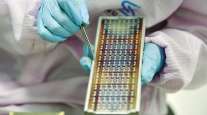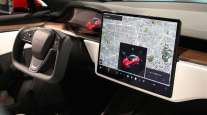Autonomous Cars’ Shortcomings Revealed in California DMV Reports

A demand from the California DMV of eight companies testing self-driving cars has highlighted a number of areas where the technology falls short of being safe to operate with no human backup.
All companies testing autonomous vehicles on the state’s public roads must provide annual reports to the DMV about “disengagements” that occur when a human backup driver has to take over from the robotic system. DMV told eight companies with testing permits to provide clarification about their reports. More than 50 companies have permits to test autonomous vehicles with backup drivers on California roads, but not all of them have deployed vehicles.
RELATED: Driverless tech companies face scrutiny over safety transparency
It turns out that a number of the issues reported are shared across technology from different companies. Some of the problems had to do with the way the cars sense the environment around them. Others involved how the vehicles maneuver on the road. And some had to do with what you might expect from systems made up of networked gadgets: hardware and software failures.
The disengagement reports themselves identify other problems some self-driving vehicles struggle with: heavy pedestrian traffic and poorly marked lanes, to cite two examples.
In describing the events that caused their backup drivers to take the controls, the companies have provided a new window into the road-worthiness — or not — of their cars and systems.
Baidu, a Chinese internet-search giant, reported a case in which driver had to take over because of a faulty steering maneuver by the robot car; several cases of “misclassified” traffic lights; a failure to yield for cross traffic; delayed braking behind a car that cut quickly in front; drifting out of a lane; and delayed perception of a pedestrian walking into the street.
RELATED: MoDOT grapples with issues related to vehicle automation
Automotive supplier Delphi noted that its autonomous system “encountered difficulty identifying a particular traffic light” and also said a GPS problem meant a vehicle didn’t know where it was. Delphi’s system also had issues with unexpected — usually illegal — behavior by other drivers, the company said in its report to DMV.
Drive.ai — which makes artificial intelligence software for self-driving vehicles — cited reasons for disengagement that included the swerving of a vehicle within a lane and “jerky or uncomfortable braking.” The firm also noted a “localization error” that meant a vehicle was uncertain of its location, and a discrepancy in data from different sensors on a vehicle.
GM’s Cruise Automation — which is building autonomous cars — said its on-board sensors didn’t always capture all data on vehicles approaching in opposite lanes, and its system didn’t always combine all the data at hand for analyzing the movement of another vehicle entering an intersection. Cruise vehicles also planned a turn into a lane of traffic where there wasn’t enough space; failed to give way to another vehicle trying to enter a lane; and planned a turn into a roadway with oncoming traffic approaching quickly. Other faults noted by Cruise included not braking hard enough when approaching a stop sign, taking a right turn too wide and difficulty around construction cones.
Cruise, like Delphi, said its cars had trouble when other drivers behaved badly. Other drivers had failed to yield, run stop signs, drifted out of their own lane and cut in front aggressively, all forcing human intervention, Cruise reported.
RELATED: PennDOT chief outlines temporary rules for testing self-driving cars
Nissan, testing its own autonomous cars, reported a software “crash” and said its system’s location accuracy could be affected by a not-always-steady GPS signal.
Telenav, a connected-vehicle technology company, reported that its system didn’t always keep to the three-second following distance it was supposed to maintain between a car and the vehicle in front of it. Also, the system steered a vehicle too close to a lane boundary, parked poorly at times and mistook a bridge overpass for a car stopped in front.
Google spin-off Waymo described one of its vehicles failing to see that a “no right on red” signal had been turned on, and the company also cited hardware and software problems requiring disengagement.
The number of miles driven during testing and the number of disengagements varies considerably among companies. And the firms are at varying stages of developing self-driving vehicle technology.
As Telenav put it, “Our autonomous system is still being developed, and we are working on improvement cycles. At this stage, we expect that [the] driver will be taking over the car control from time to time due to the fact that it is new technology.”
Distributed by Tribune Content Agency, LLC




